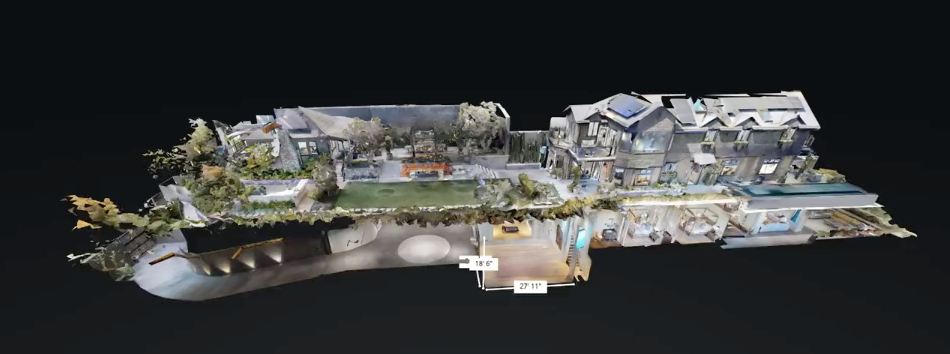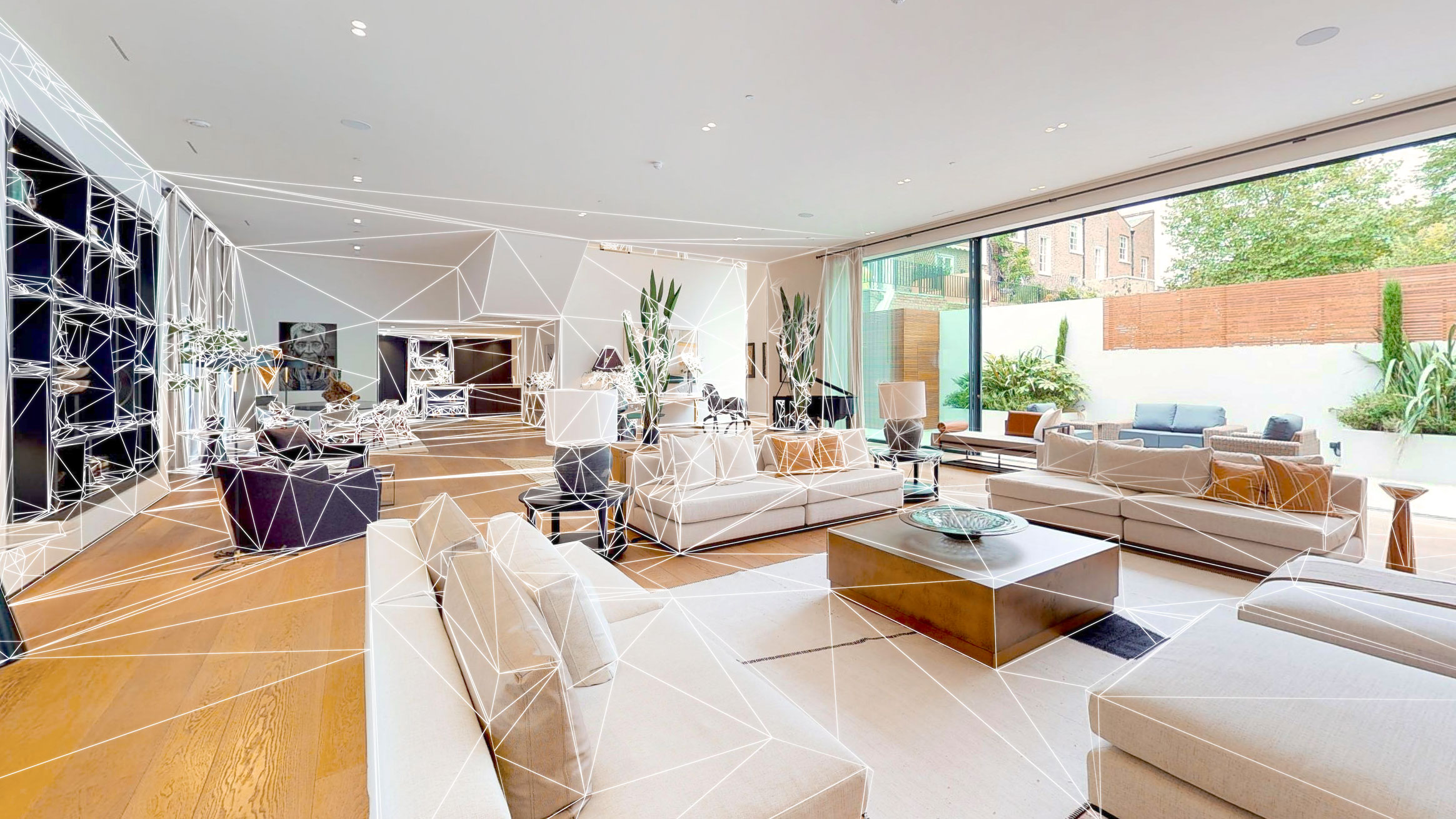WHAT’S THE DIFFERENCE BETWEEN 360 AND 3D ‘DIGITAL TWIN’ PROPERTY TOURS?
Find out how depth, data and the emergence of the ‘digital twin’ are clarifying what it means to offer a true 3D virtual tour experience. See for yourself with quick look here at reality capture terminology and what it takes for a fully immersive customer experience.
Do you remember when virtual property tours were just glorified slide shows stitched together into two-minute YouTube videos?
Digital property tours have grown up a lot since then. Now a high tech version, the 3D virtual tour, is dominating the space. However, like all exciting new technologies, the 3D tour has spawned a sea of copycats—and despite their claims, many are not actually 3D at all.
Today, we’re going to explore what makes a 3D tour actually 3D, and how real estate agents can tell the difference.
WILL THE REAL 3D TOUR PLEASE STAND UP?
First things first: what is a 3D virtual property tour?
Well, a three-dimensional property tour lets real estate consumers remotely “walk through” a virtual model of a home. It’s perhaps best described as “reality capture,” as that’s precisely what takes place, and the process brings any built environment directly to anyone, from anywhere, on any device. Viewers can navigate the space simply by clicking or tapping their screen; they can look up or down, as well as side to side, just as they would in real life. The transition from one point to the next within a tour is seamless. There are no visual distortions in a true 3D tour.
So what differentiates a true 3D tour from imitators? It’s all about the depth. Any virtual tour can capture two dimensions—height and width—but true three-dimensional tours also capture depth.
Typically this is done via a specialized camera equipped with multiple lenses and infared that can sense, measure, and capture depth. However, in utilizing the spatial context of spaces already captured from around the world, Matterport has trained its AI-powered software to add depth to images captured with simple 360 cameras and in the near future, smartphones. The resolution and features vary depending on your camera but the experience remains. In other words, Matterport can create true 3D from 360. Matterport is a pioneer and the leader in 3D tour technology.
Now that you know the difference between a real 3D tour and the stitched together panoramas that call themselves 3D, that begs the question—does it really matter?
WHAT 3D TOURS MAKE POSSIBLE
One big difference between 3D tours and 360-degree tours is their verisimilitude, or how true to life they are—there’s a reason it’s known as “reality capture.” When virtual property tours are true-to-life, consumers are more likely to substitute them for in-person tours. This offers real estate agents benefits like:
- Fewer disruptions to your seller, thanks to buyers being able to narrow down whether or not a home is right for them before requesting an in-person showing
- Out-of-area buyers are more likely to purchase a home with a 3D tour, as they can “tour” a property without physically being there, opening greater opportunity to “sight-unseen” sales
- Serious buyers are able to make a purchase decision without requesting multiple showings of the same property
THE DATA BEHIND THE ‘DIGITAL TWIN’
Considering all the terms that can enter the virtual tour conversation, at times it might be difficult to accurately describe one view from another. With that in mind, perhaps the best way to identify what distinguishes the true 3D experience is the data that’s captured and the form it takes as a space’s “digital twin.”
As mentioned, the key to a truly immersive 3D experience comes from an accurate reading of depth. The depth data that’s utilized within Matterport’s AI-powered software provides the speciall context necessary for the creation the complete digital twin. The result is an unmatched documentation and user experience of the place that’s aimed to showcase.
WHAT TO ASK WHEN EVALUATING 3D TOURS
Now that you know the basics of what makes a virtual tour truly three-dimensional, we’re going to leave you with a brief checklist you can use to evaluate vendors in the future. Use it to not only determine whether a tour is truly 3D, but also to determine if a tour offers other benefits for your business.
- Does the tour offer smooth walkthroughs, or is the navigation rough or somewhat jarring? Rough transitions indicate a tour that’s probably not 3D.
- Does the tour offer a “dollhouse” view of the property? Real 3D tours like Matterport will create a virtual model of an entire property that you can zoom into and out of.
- What other assets does the tour vendor offer? A single Matterport shoot gives agent a 3D property tour, a virtual reality tour, high-res listing photos, floorplans, and more.
- Where can I distribute my tour? Marketing is important, so look for tours with partnerships with major online property destinations. Matterport tours, for example, can be automatically distributed to Realtor.com, Homesnap, Homes.com, and beyond. They also automatically produce ‘Mattershort’ GIFs and videos of your tour that you can easily share on social media and boost client engagement.
Ready to add the digital twin to your toolbox?



Leave A Comment